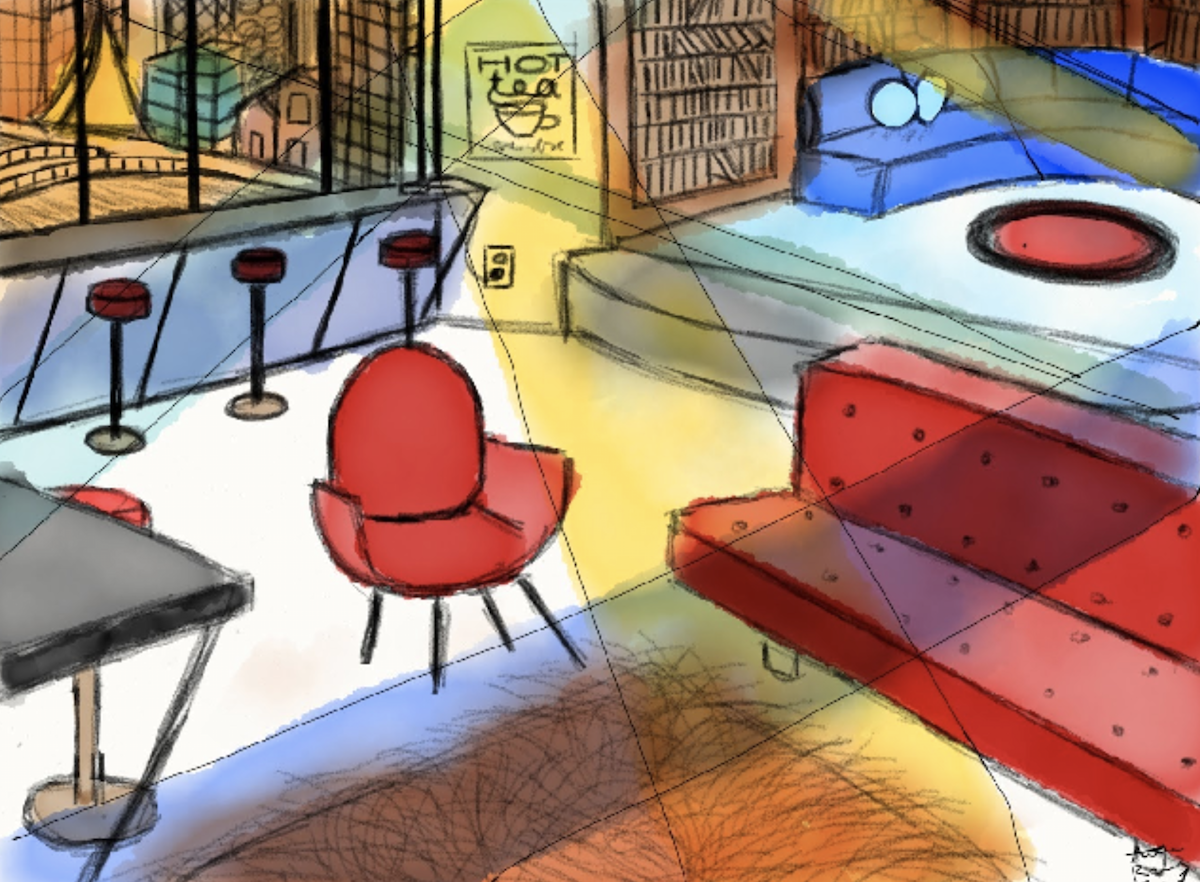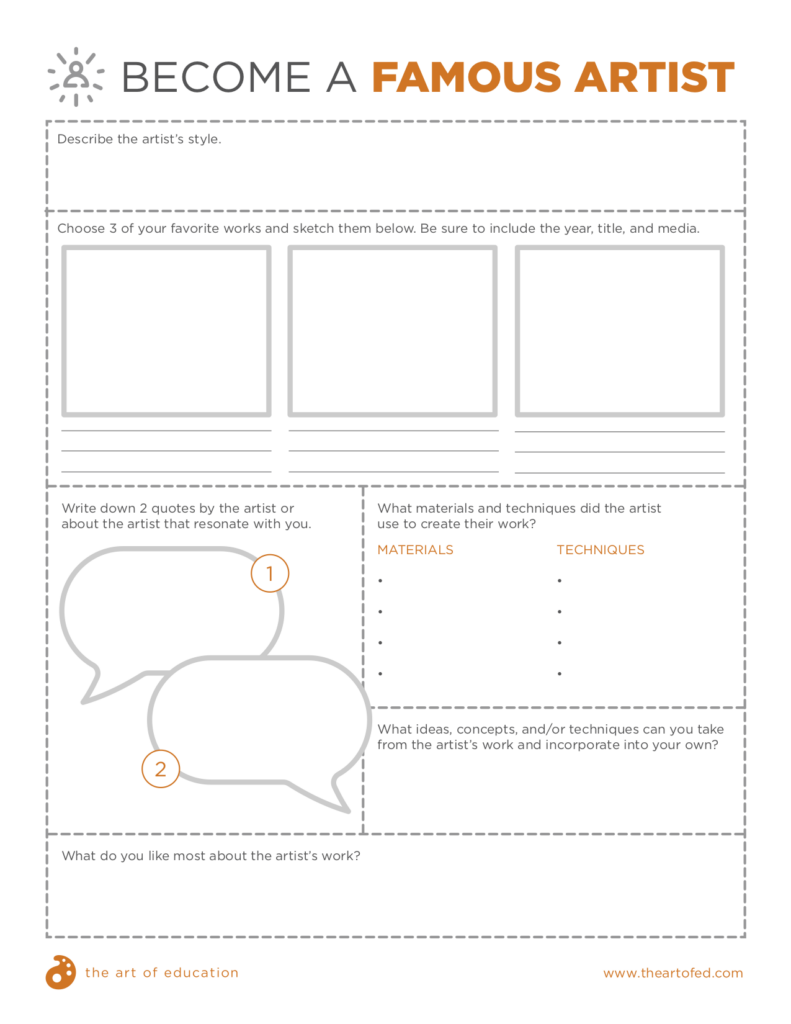I’m one of those teachers who is forever writing new lesson plans. If I end up using a lesson or prompt more than once, it’s because the students and I LOVED it.
Having students pretend they’re a famous artist is a lesson to which I keep coming back.
In this lesson, students research and try to get into the heads of famous artists. Then, they are tasked with creating work in their styles. Let’s take a look at how it’s done.
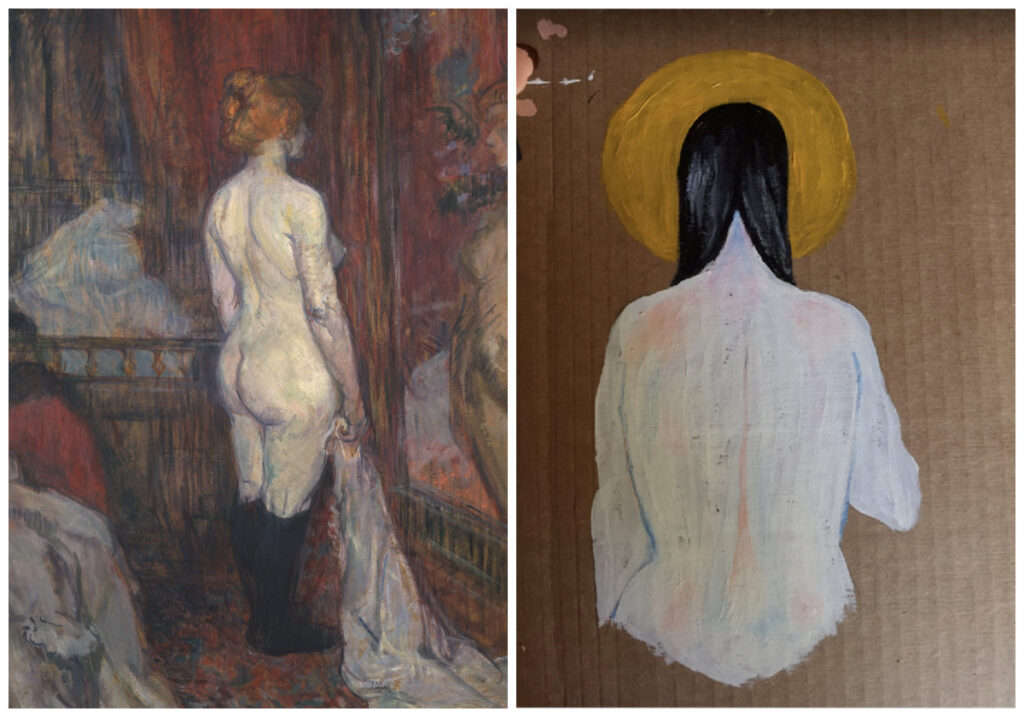
To get started, have your students spend time researching and collecting inspiration from artists they like.
You might have them explore Pinterest, look through books, or create a WebQuest to focus students’ research. If you plan far enough ahead, you might be able to have your school librarian pull books together for you. Or check to see if your public library will pull books for you based on certain topics.
Having students pretend they’re an artist they love helps to remove some of the fear of creating while also helping them to practice synthesizing information. The work becomes a collaboration between the selected artists and the student.
Once students have selected an artist, have them answer the following questions in their sketchbook or use the handy download below.
- Describe the artist’s style.
- Choose three of your favorite works and sketch them. Be sure to include the year, title, and media.
- What materials and techniques did the artist use to create their work?
- Write down two quotes by the artist or about the artist that resonate with you.
- What ideas, concepts, and/or techniques can you take from the artist’s work and incorporate into your own?
- What do you like most about the artist’s work?
Here is an example of some information gathered from a student who decided to research Henri de Toulouse-Lautrec.
- “He tends to create a dream-like, glamour-stripped image of people in both closely intimate and more social, party-like situations, as well as just single subjects. He uses lots of “messy” brushstrokes to create beautiful images. He often worked on cardboard as well.”
- “He uses LOTS of things. He has used oils (often thinned with turpentine), watercolors, pens and ink, pencils, gouache, and even created some ceramic and stained glass work.”
- “A series of works based on the realism of human life.”
- “I think I already use a lot of the concepts and ideas that he uses, but I want to be able to portray it as effectively as he can.”
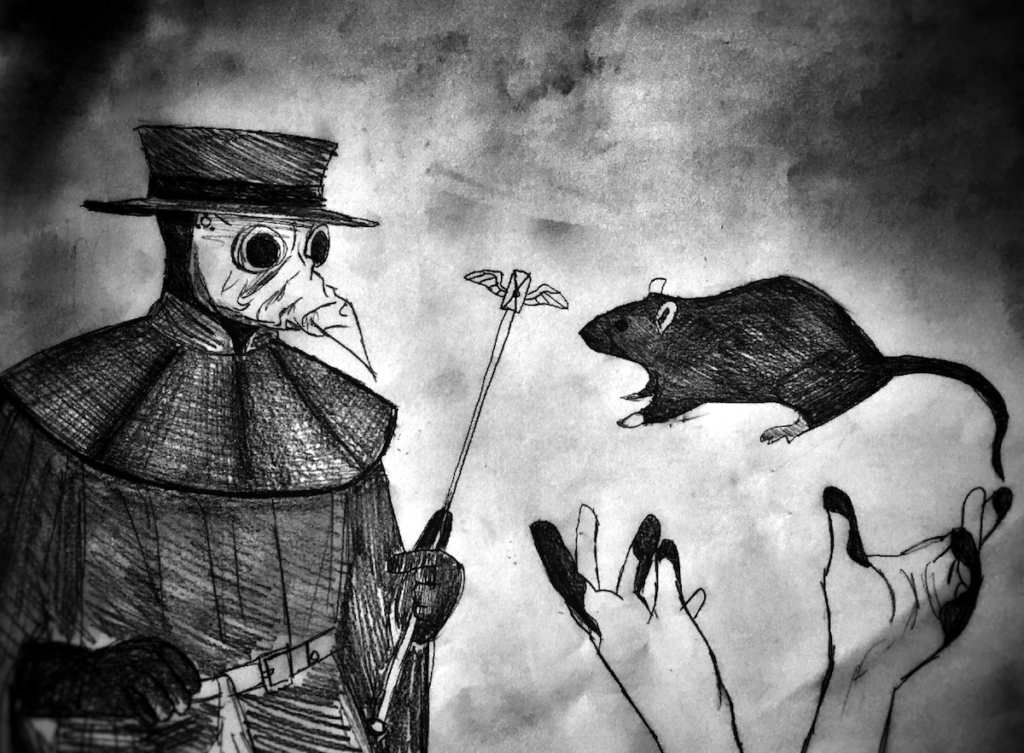
After students have spent time researching, they’re going to transition into pretending they ARE the artist.
As they respond to the following questions, they should do so, not as themselves, but thinking like their selected artist. Remind them they can do some research to better understand their artist, and sometimes they’re going to have to make educated guesses.
- Describe a day in the life of your artist. Think about questions like: When do they get up in the morning? What do they eat for breakfast? With whom do they talk or interact throughout their day? When are they most productive? For inspiration, have students read this article by Kevin Short, descriting the way brilliant people schedule their days.
- How do you think your artist feels, moves, and behaves when they are creating?
- Describe the environment where your artist creates.
Here is an example of how the student studying Henri de Toulouse-Lautrec responded.
- “He hung around in brothels a lot of the time, and even lived in a few for weeks at a time, and painted scenes from inside those places. He was only around 5’1″ due to a condition caused by inbreeding, and he was also an alcoholic.”
- “It looks like an almost subconscious movement to me. Of course, things are planned out, but it feels to me like the hand is moving to create because it must, and the hand is doing as it pleases. He probably felt a lot while working, and I feel like he probably didn’t move too much while painting other than his hands.”
- “As I said before, he hung around brothels, so I assume that was the environment he was in when he was working a lot of the time.”
Some of your students may find this difficult because it’s an abstract concept. You might walk through the process together as a class. Also, consider having children’s books about artists available for students to peruse.
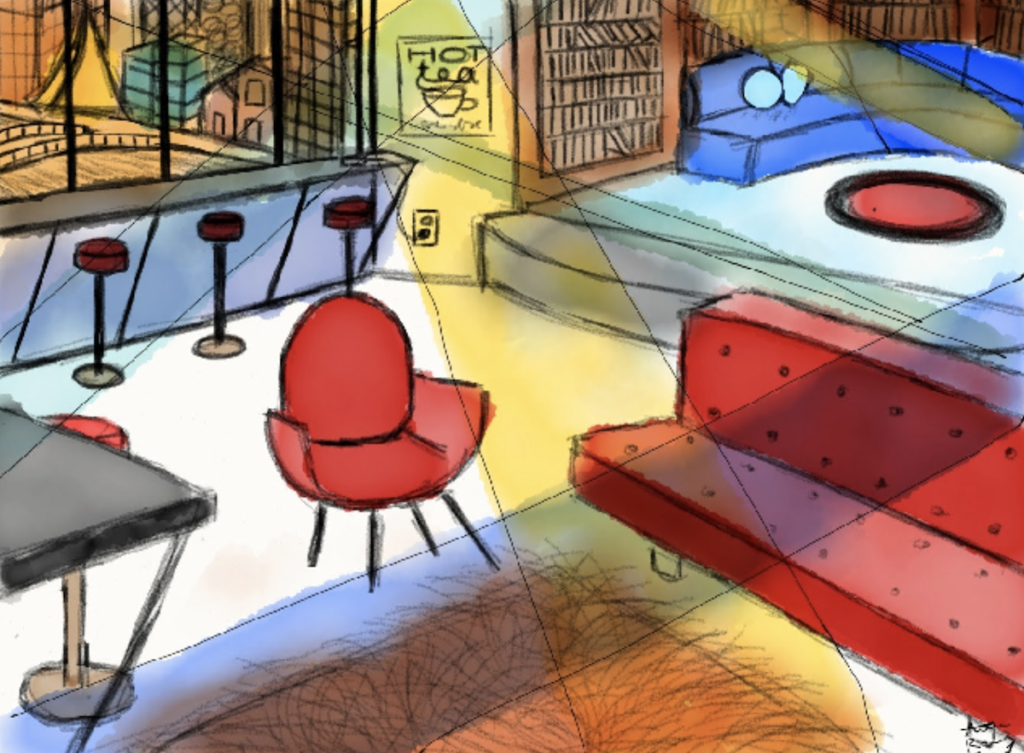
After students research and dive deeper, they are ready to create. Here are 3 steps for getting started.
- Collect Materials
Have students gather the same or similar materials the artists would have used. - Curate a Playlist
Have students pick music to which their selected artist would have listened. - Create
Remind students they’re pretending they are the artist as they create.
If your students are struggling, start by having them copy the work of their artist. Then talk about how to transition to taking inspiration from the artist.
I like to use this lesson near the beginning of the year. Seeing the artists students choose and why is a nice way to learn about your students. Plus, the research students gather for this project can inform future work.
This exercise works well because there is safety in the process. Students are not creating as themselves, so if the piece doesn’t turn out how they wanted, it’s not their fault. Instead, they can place blame on not fully understanding the artist’s process, technique, or materials.
There are so many reasons I keep coming back to this lesson. Try it out for yourself and see if it becomes a favorite for both you and your students, too!
If you were going to pretend to be an artist, who would you be and why?
What is your favorite lesson to teach?
Magazine articles and podcasts are opinions of professional education contributors and do not necessarily represent the position of the Art of Education University (AOEU) or its academic offerings. Contributors use terms in the way they are most often talked about in the scope of their educational experiences.
